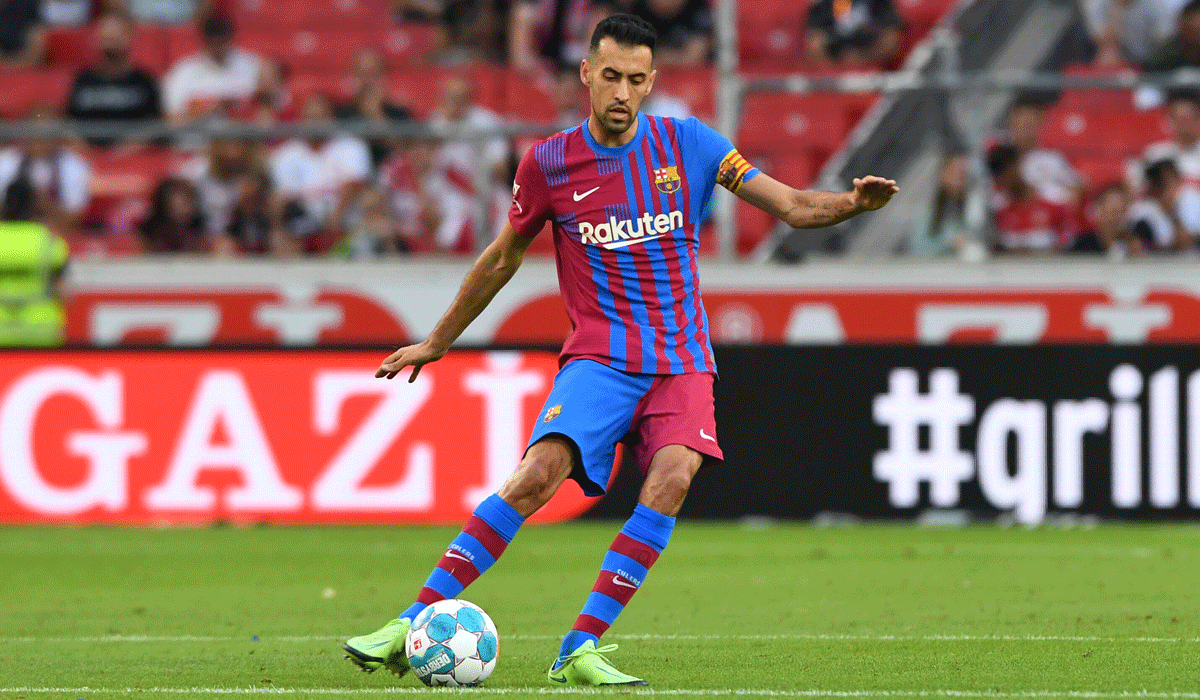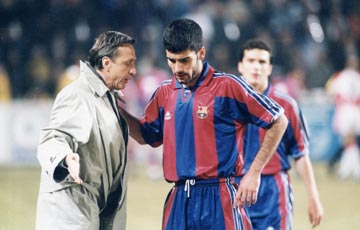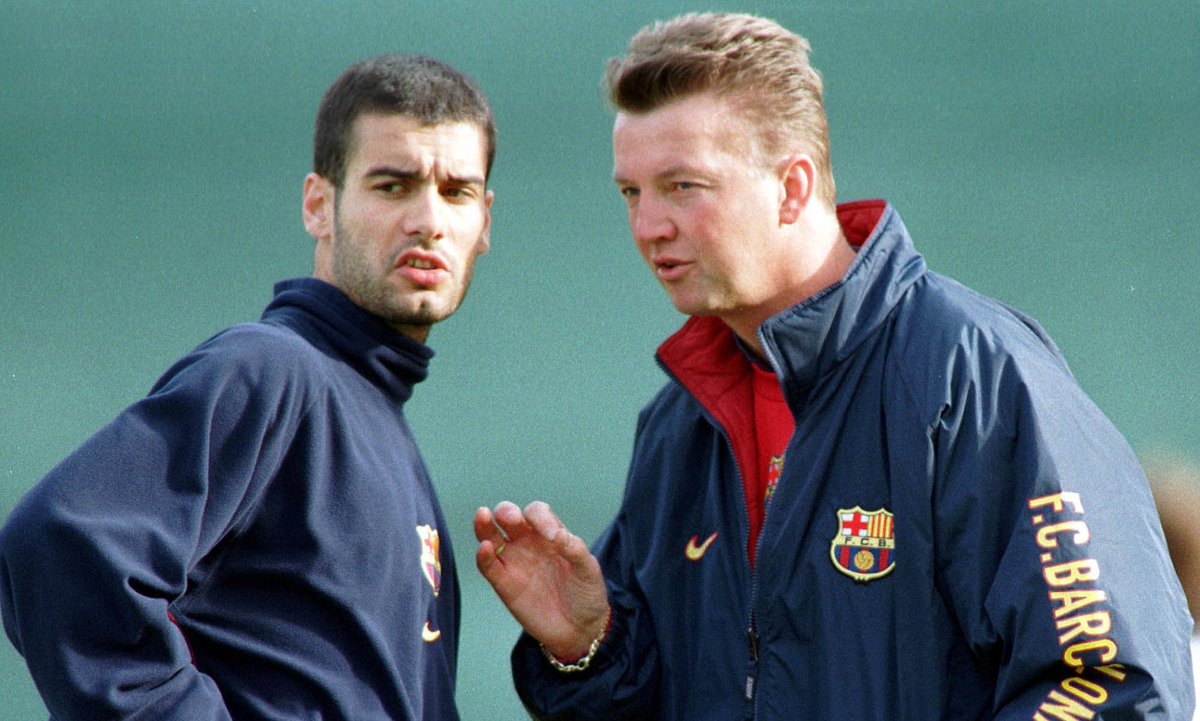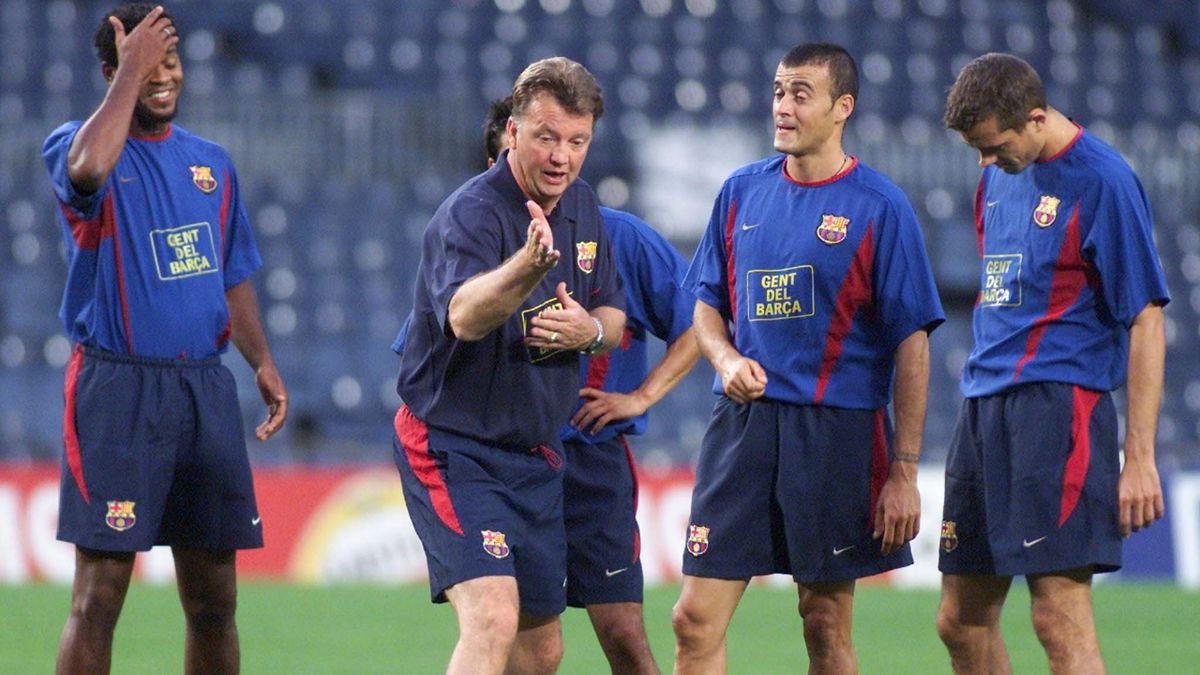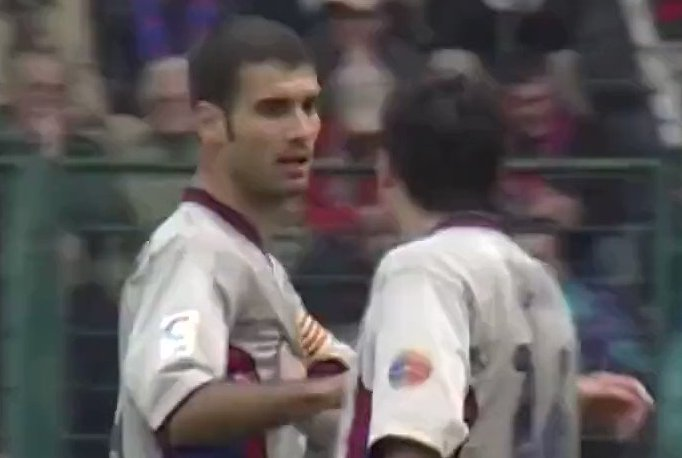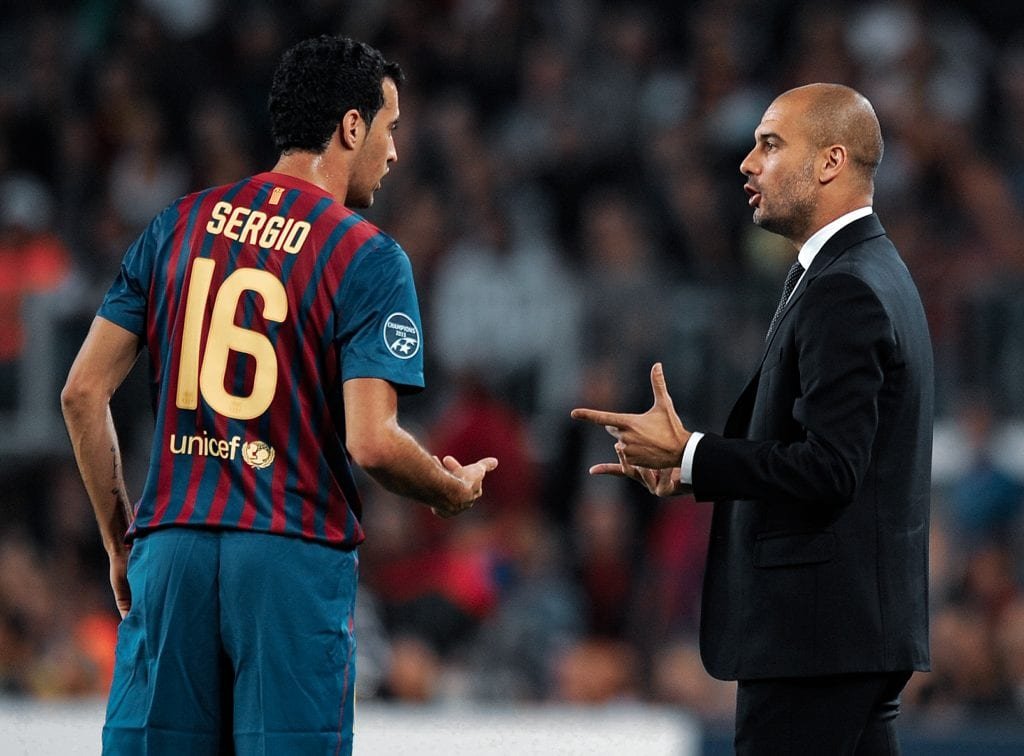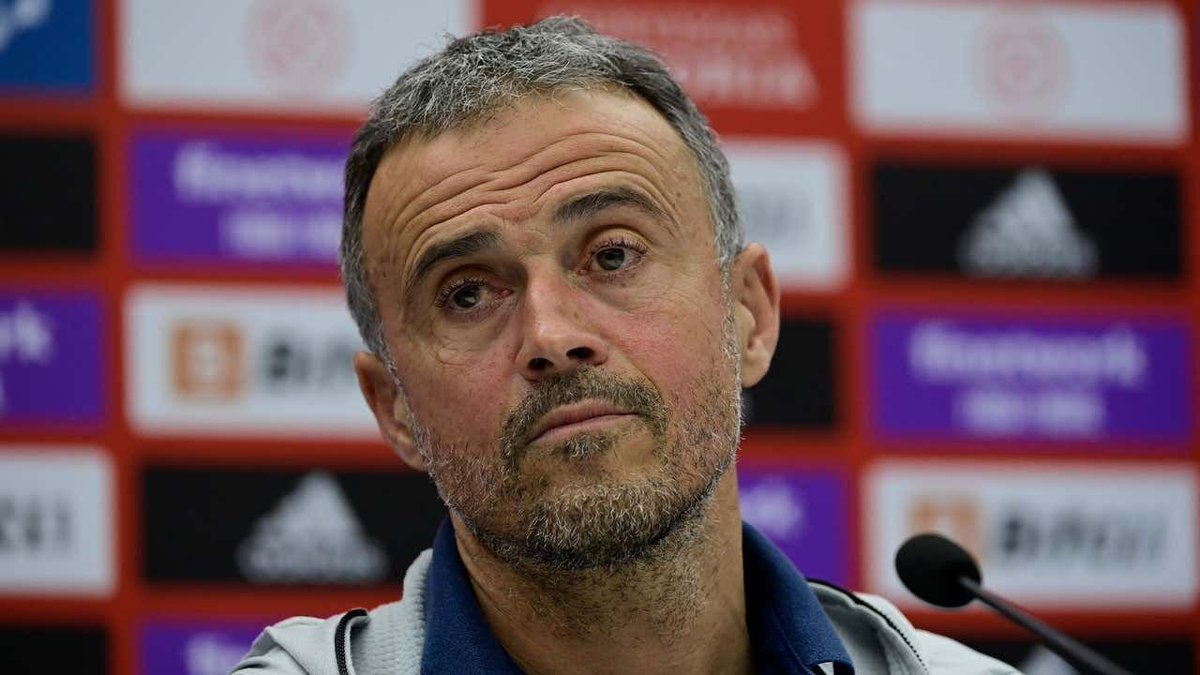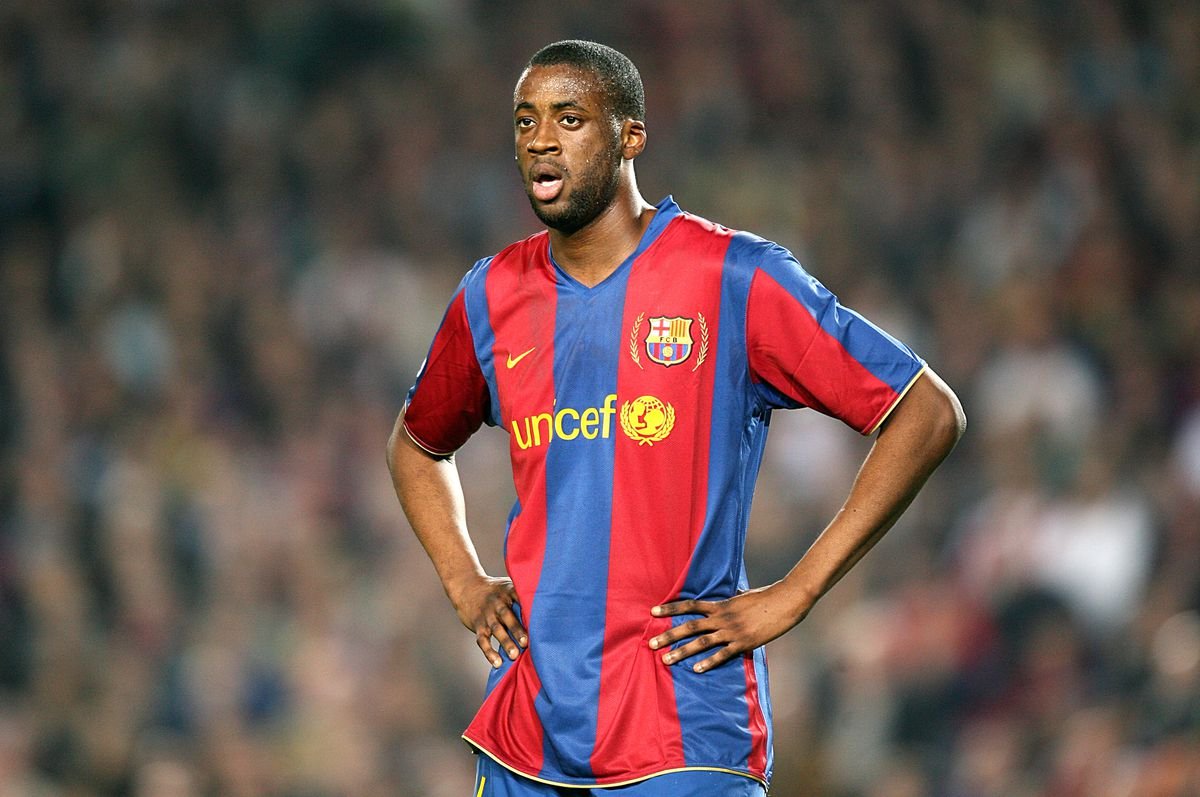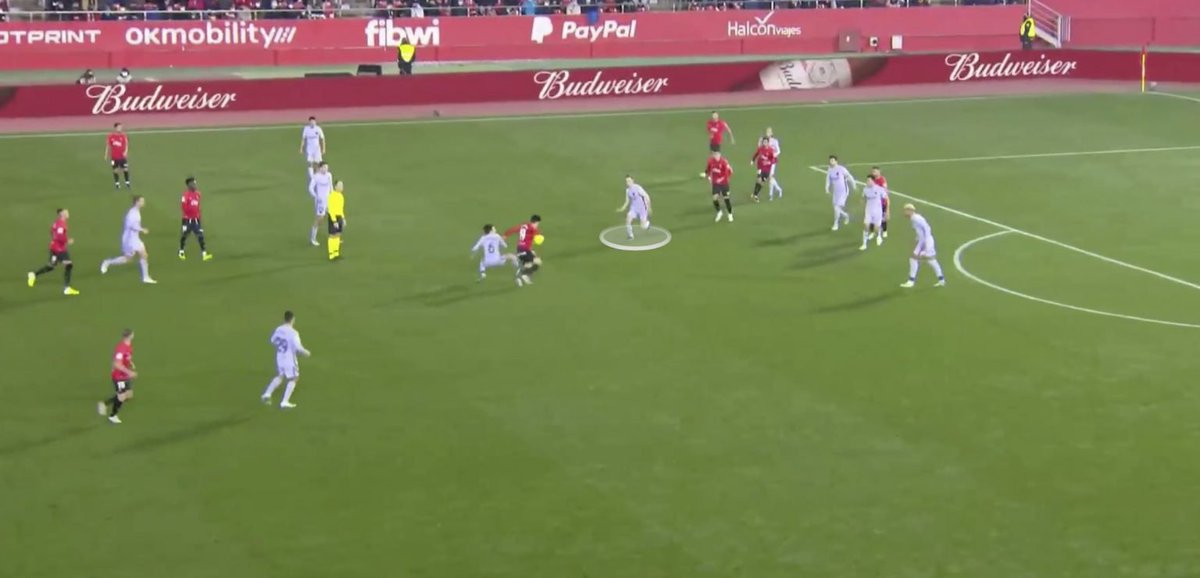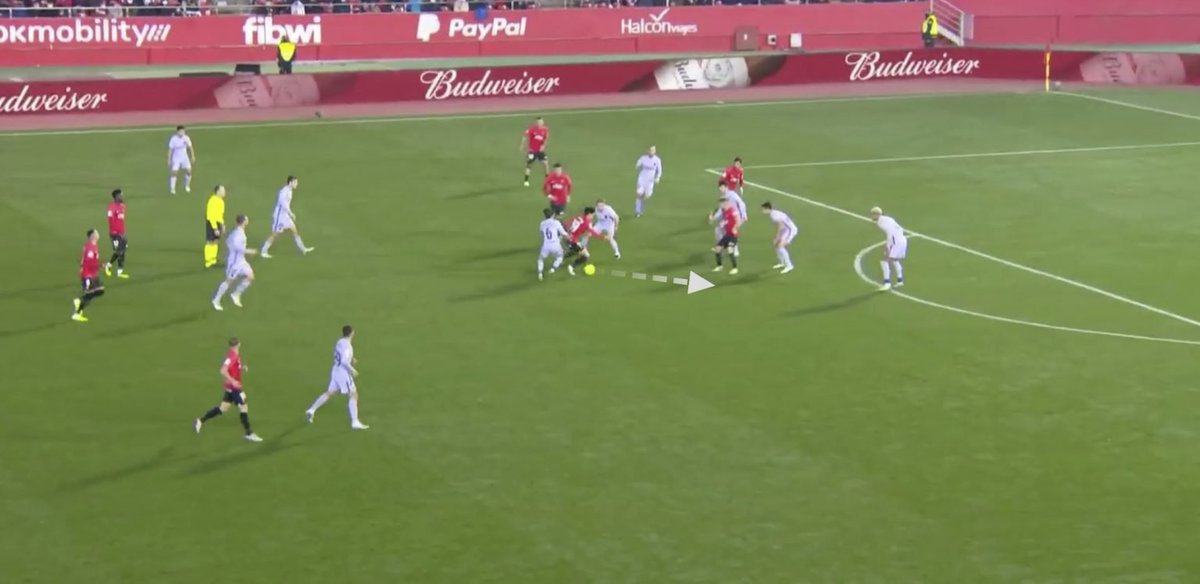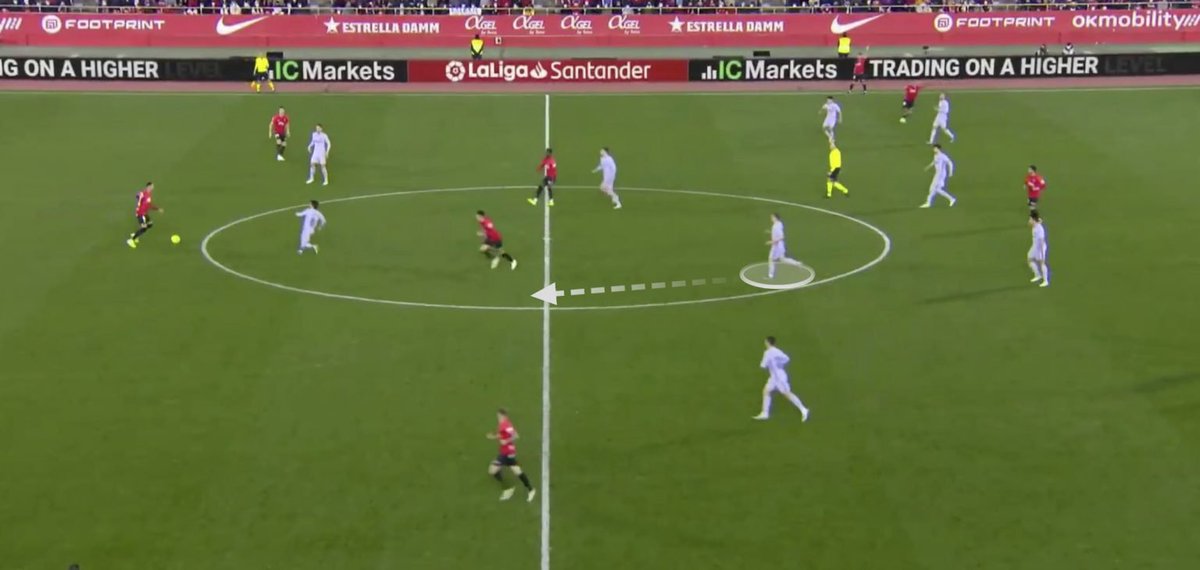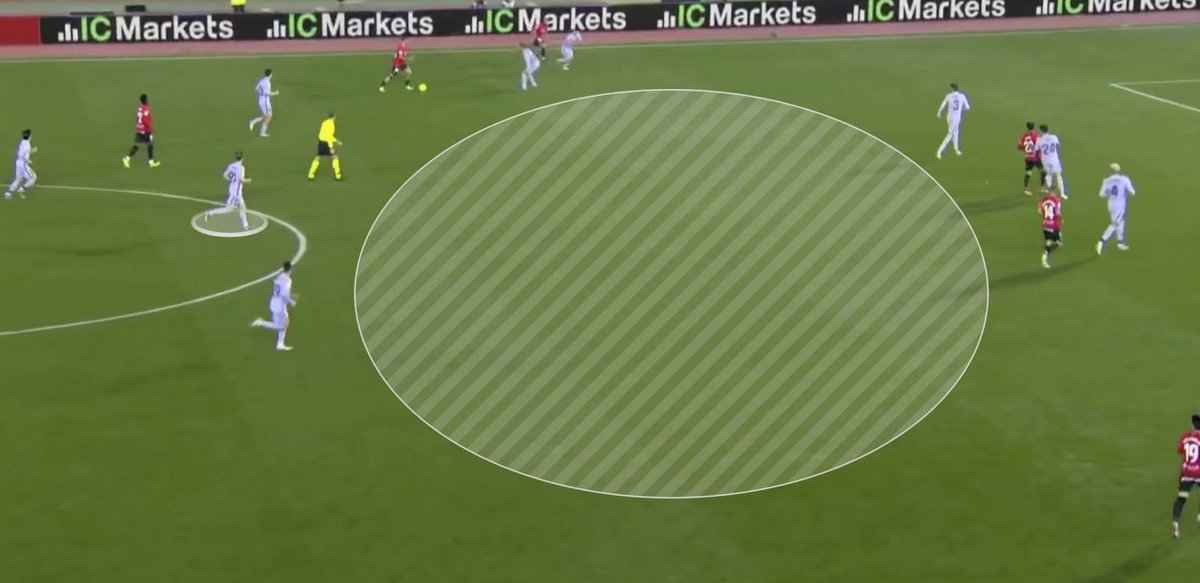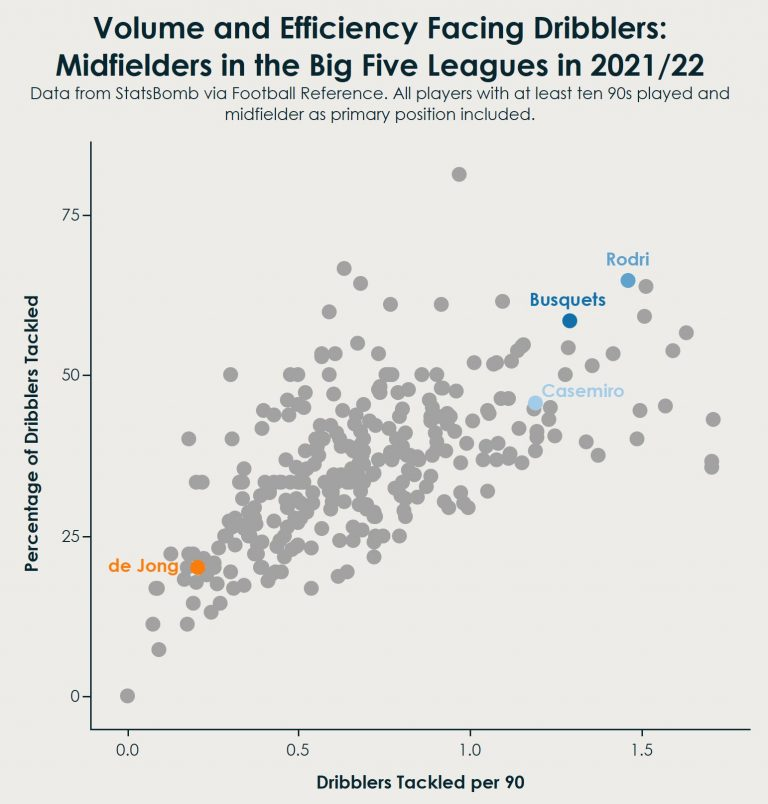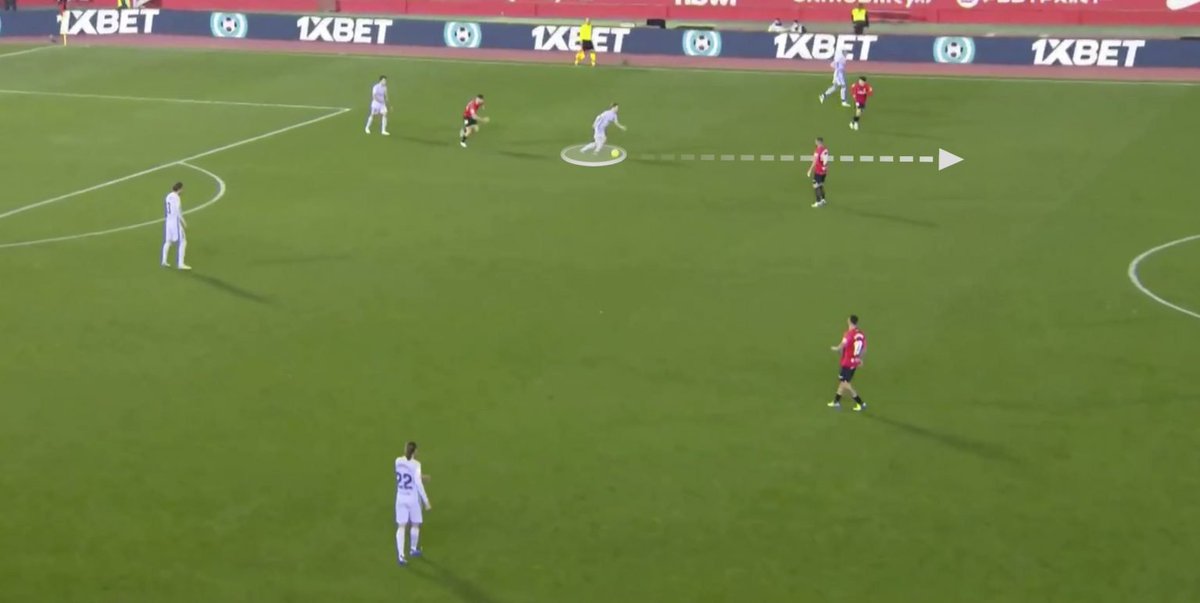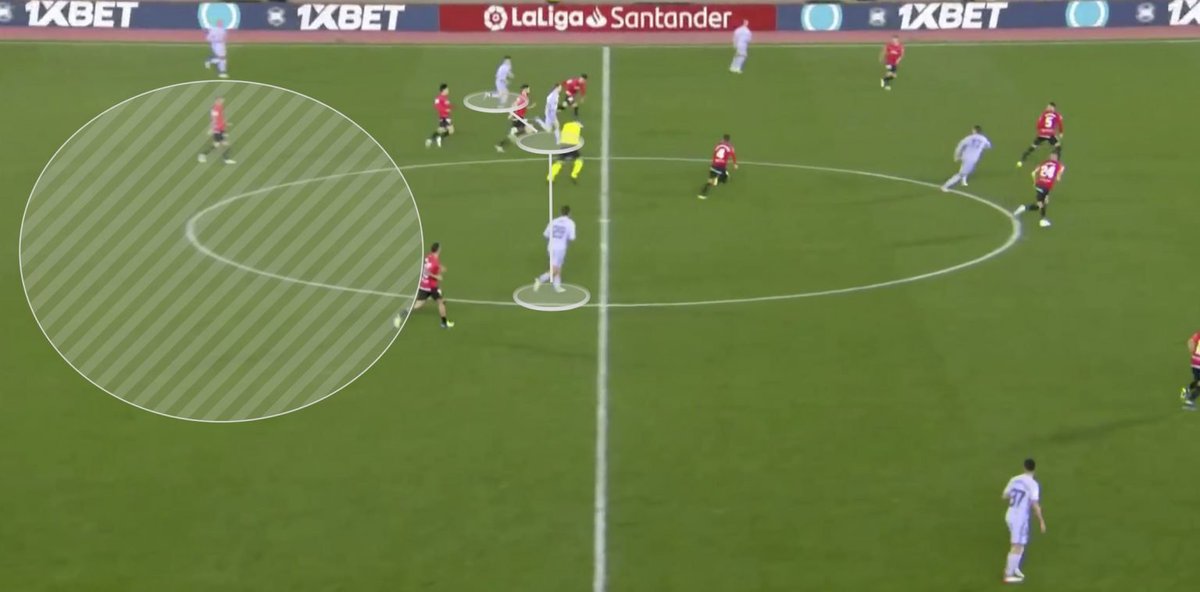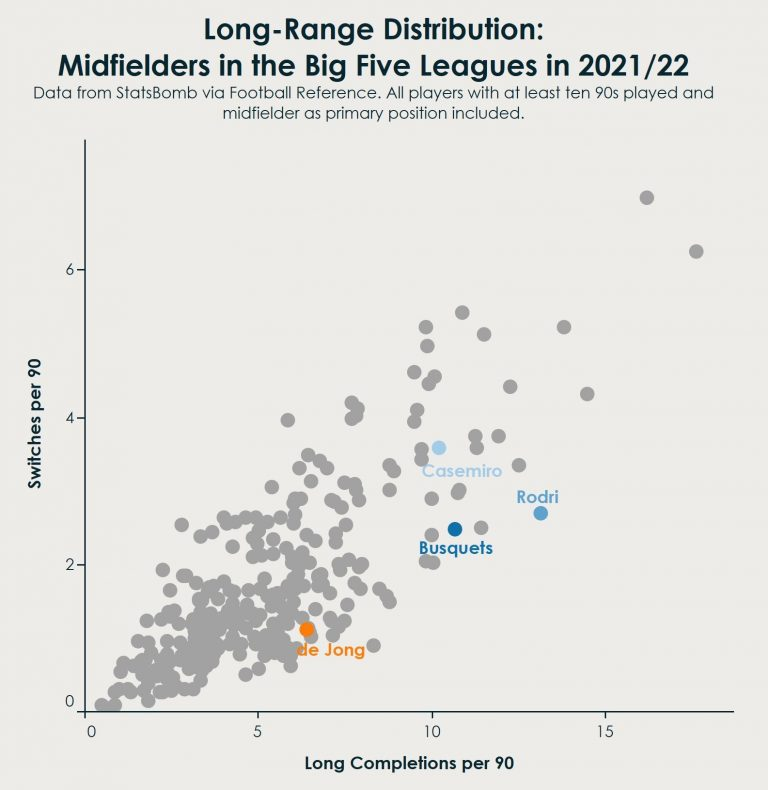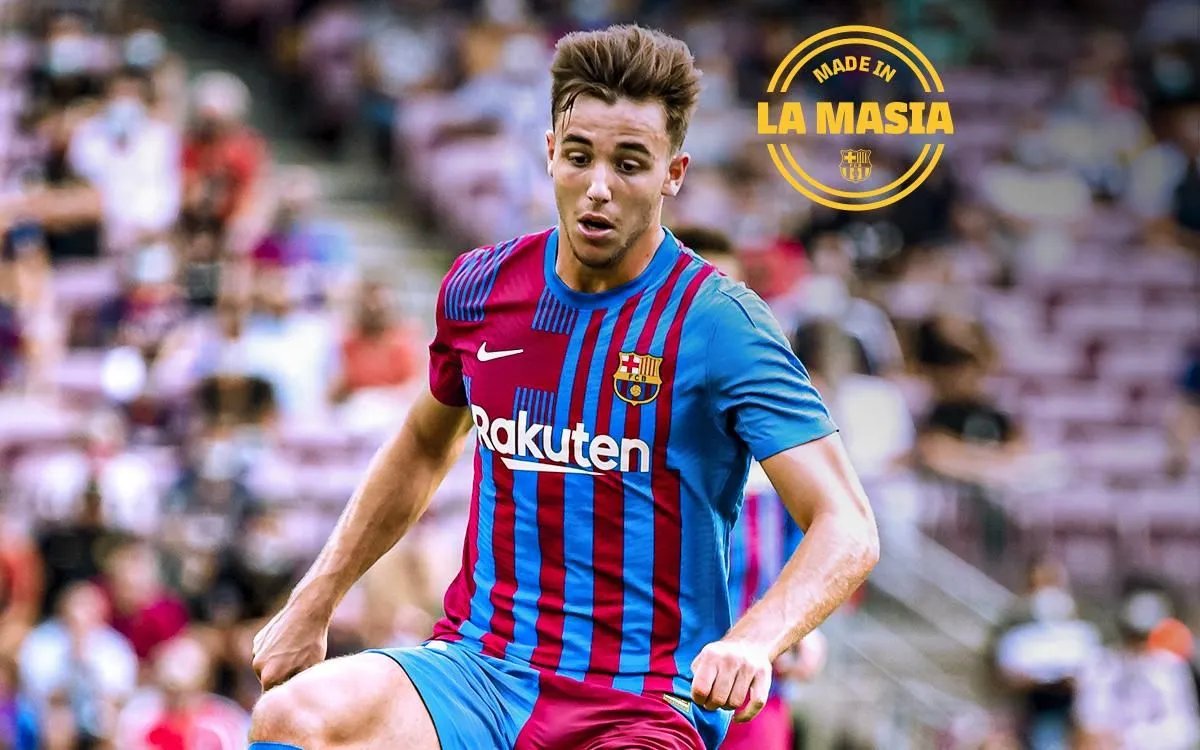Why do Barca have such a hard time finding a natural replacement for Sergio Busquets?
Let& #39;s start with a bit of history. Pep Guardiola, as a teenager had been picked out of Barca& #39;s reserve team and chucked into the first team by Johan Cruyff.
Let& #39;s start with a bit of history. Pep Guardiola, as a teenager had been picked out of Barca& #39;s reserve team and chucked into the first team by Johan Cruyff.
The Dutchman insisted on a methodical playmaker, rather than a defensive ball winner for that position. Guardiola, had the conservative positioning, calm, brilliant distribution. He was the on field leader, who received the instructions from the technical area and dictated play.
Even Van Gaal marvelled about how Guardiola could speak like a coach even while he was a player. Here& #39;s what he had to say: "I made him my captain in my first year. He was always a captain on the pitch anyway – a real captain. Because of that, I expected he would become a coach."
Van Gaal: "With Luis Enrique, I never expected he would become a coach. He was an intuition player, he didn’t speak with me about tactics. The players I foresaw becoming coaches were usually my captains."
Van Gaal: "A captain has to see not only his own position, but also the needs of the team. Guardiola did that. And when it came to tactics, he could talk for hours and hours! (laughs) He really enjoyed that. And something that I’d say about Guardiola was that he had personality."
Van Gaal: "That’s one of the reasons I promoted him to captain. At one point the squad wasn’t satisfied that I had excluded [Hristo] Stoichkov from training with the first team, and Guardiola came to me to tell me. That took guts."
At the time of Guardiola& #39;s retirement, during the early to mid 2000s, deep lying playmakers weren& #39;t really valued that much anymore. Guardiola: "I think players like me have become extinct because the game has become more tactical and physical."
Guardiola continued: "I haven& #39;t changed, football has changed. To play in front of the defense right now, you have to be a ball winner. If I was at Barcelona right now, I& #39;d never make it."
Barcelona& #39;s playing style and the required role is so particular that Sonny Anderson(Barca 1997-99) believes that Pep Guardiola didn’t learn anything from Van Gaal, rather the Dutchman inherited his understanding of the “Barcelona game” from his captain.
Anderson: “Van Gaal liked the long passes and Guardiola the short ones, and from these conversations the style we practised during those years was defined."
Anderson: “Van Gaal gave certain instructions and then, within the field, Pep directed to the team based on how Barcelona had to do it by style and history. It was Guardiola who taught Van Gaal how the team had to play."
In comes Xavi Hernandez. Although Xavi was a physically unspectacular player, he boasted the sharpest footballing mind of his generation and an unparalleled ability to understand the tactical battle unfolding around him.
Xavi was known as & #39;The Machine& #39;. In Xavi& #39;s case that referred to his brain. Xavi: "I& #39;m a passer. I get the ball, pass the ball, get the ball, pass the ball." However, Xavi struggled to impose himself in the first team, for one major reason: Pep Guardiola.
Xavi: "The lucky break came for me when Pep left." Barca was so obsessed with the Guardiola way, that they kept fielding Xavi in the holding role. Until Frank Rijkaard arrived, Xavi was the pivot for 6-7 years. Rijkaard shifted Xavi to an advanced position.
The obsession with Guardiola throughout the Barca ecosystem was so great, that Rijkaard had much of a job at hand to convince Xavi of this positional change. After all, Xavi had spent his entire youth playing as a pivot, or in other words, & #39;a Guardiola& #39;.
Then comes Iniesta, a very gifted and different player naturally. Because of his advanced skills, and the ability to move past opponents with his trademark & #39;croqueta& #39;, he could play a more advanced role.
But the Guardiola obsession kicked in again. At La Masia, he was fielded in the deepest midfield role. Barca wanted Guardiola clones! People even used to call Iniesta the new Guardiola.
Barca B& #39;s coach, Josep Gonzalvo, realised Iniesta could play much better higher up, so he did that, only for Lorenzo Ferrer to instruct Iniesta to emulate Guardiola again. At that point top European clubs began demanding strong and tackling midfielders.
Fabregas, another player who excelled higher up was regularly fielded in the & #39;Guardiola& #39; role at La Masia. He was everyone& #39;s role model.
Finally, a player did arrive who was the literal clone of Guardiola. An exact of exacts. Sergio Busquets. Busquets could protect the defense, and ironically, different than Xavi, Iniesta, and Fabregas, he played in a more advanced role in his younger days.
Although Busquets arrived at Barca long after Guardiola had left, he was taught the Barca way because of his father, who was the goalkeeper in Cruyff& #39;s Dream Team. Barca had at long last found their new Guardiola, when Busquets played under Guardiola at Barca B in 2007/08.
Guardiola: "If I could come back and play again, I& #39;d want to play like Sergio Busquets." Even the Spanish NT began fielding midfielders that had all learnt their game on the model of emulating Guardiola. Such was the impact, that it arguably lasts till this day at Barcelona.
This is what Luis Enrique said about Busquets at the pre match press conference ahead of the Nations League clash with the Czech Republic: "“Any player would end up losing in a comparison with Busquets, and more so a young player like Gavi.”
Now we& #39;re looking at the Busquets clone. Barcelona had always been modeled on the & #39;tiki taka& #39; and & #39;jugones& #39;, meaning playmakers, was at the heart of it. But then with football& #39;s evolution something more was needed.
Xavi Hernandez famously referred to Busquets as the "snowplough," as per an interview in the Guardian and since 2010 no one other than Dani Alves had made as many tackles as Busquets.
For all of the attacking verve and excellence that Barca were known for, their control of most games was not possible without Busquets& #39; presence at the heart of central midfield. A footballer& #39;s brain combined with brawn if required, Busquets was the protector supreme.
That he relegated Yaya Toure to a transfer to Manchester City tells the ill-informed much about the skill set of this most unassuming of footballers.
It takes a very special kind of player to be able to carry out Busquets role so well. To be expert in the defensive-midfield role, the timing of the tackle is paramount. Once successful, take, give and go—on multiple occasions in a game. Firefighting is the appropriate phrase.
Sat in the pivot position, he has the luxury of being able to cast his eyes over most of the pitch before him and assess where best to play his next pass. Often well before the ball reaches him. That’s a quality that’s hard to match.
But then as in every player’s career comes a time when the two legs can’t cope with the demanding role of the position. Xavi: "Busquets is not eternal. It& #39;s important to have that in mind when planning for the future. We don’t have a profile like Busquets in the squad."
Why not Frenkie?
Samuel Gustafson writes in Barca Universal: There are two concepts when it comes to playing as a single pivot: Duelling and disrupting.
Samuel Gustafson writes in Barca Universal: There are two concepts when it comes to playing as a single pivot: Duelling and disrupting.
Out of possession, the job of a single pivot is incredibly complex and vital. Duelling entails dirty work – closing down the ball carrier, putting in challenges. De Jong, simply put, is not very skilled at this.
Here’s an example from Barcelona’s match against Mallorca. During a transition, where the opposition attacker brought down the ball in the center of the attacking third, de Jong was sitting alone in front of Barça’s backline. It was his job to shut down a play like this.
However, the Dutchman did not actually engage with the dribbler whatsoever. By staying back, he essentially gave the opponent a path at Barça’s center backs. It was Riqui Puig, coming from behind, who had to foul the dribbler – still giving away a free kick in a dangerous area.
Data shows us that someone like Sergio Busquets clearly engages with opponents with far more regularly and successfully than the Dutch international.
Then, when it came to disrupting, de Jong’s performance against Mallorca was arguably more concerning. Disrupting involves more intelligence and reading of the game to shut off the opposition’s ball progression.
In the move shown below, Mallorca had recycled possession back to their defenders. Naturally, Barça stepped up. De Jong, though, went too far.
Mallorca played a simple ball from center back to winger, followed by a short pass inside. After this, they had numbers forward against an incredibly exposed defense. Meanwhile, Barça’s #21 is caught lacking.
Compared to the world’s elite pivots, De Jong doesn& #39;t have the defensive chops in terms of volume or efficiency to hold down that role in front of the backline himself. Lower tallies for metrics like interceptions and aerial duels won than Busquets, Rodri, and Casemiro.
What’s De Jong’s strong point?
The Dutchman is an elite ball carrier – one of the best in the world. For context, he is in the 94th percentile of midfielders for progressive carries per 90 minutes in the last calendar year, as well as the 88th percentile for successful dribbles
The Dutchman is an elite ball carrier – one of the best in the world. For context, he is in the 94th percentile of midfielders for progressive carries per 90 minutes in the last calendar year, as well as the 88th percentile for successful dribbles
His ability to drive through the lines from deep can be invaluable for a possession-dominant side like Barça. Essentially, they can “manufacture” transition-esque situations – the Kevin De Bruyne stuff, with numerical superiority and the opposition defense in disarray.
As seen in Netherlands under Van Gaal, he has the positional freedom to do this as there is always a player covering for him. As a single pivot at Barcelona, de Jong cannot really utilize this ability.
What the run will do at Barca is that it will lead to an exposed backline in transition that will have top opponents licking their lips. The carry does not create that dangerous of a situation. After de Jong releases possession, there are still seven defenders behind the ball.
The Dutchman’s passing style does not match that of a single pivot. He does not have the tendency to consistently spray passes and pick out teammates in all directions to spread the pitch.
In that match, the 24-year-old had only two progressive passes and two progressive carries. That was it from 88 total touches with zero successful dribbles.
On a positive note, he showed great ability to combine first-time and weigh his short-to-medium range passes to perfection. It is just that his type of distribution is not ideal for being a single pivot, and take away his ability to carry, you get a slightly above average player.
Why isn’t de Jong the interior Xavi is looking for?
In a Pedri-Busquets-de Jong midfield, Frenkie has to drop deeper to pick up the ball and employ his penetrative carrying. This brings a defender towards Barça’s deep buildup and leaves the right half-space empty.
In a Pedri-Busquets-de Jong midfield, Frenkie has to drop deeper to pick up the ball and employ his penetrative carrying. This brings a defender towards Barça’s deep buildup and leaves the right half-space empty.
To keep it simple, de Jong would most likely thrive is as a half of the double pivot. This would allow him to pick up the ball deep without disrupting his side’s shape. And even when playing for Netherlands, Van Gaal shapes the team up like that with usually a three man defense.
So when Eduard Romero says that the decision to let Frenkie go is entirely technical, it’s half true. Obviously a person at his position can’t say that it’s financial. Laporta, on the other hand, can make those hints. It’s the art of politics, of which Laporta is a master.
Who has Xavi earmarked for the much coveted Guardiola/Busquets clone role? Nico Gonzalez.
In the short term, they know that Nico can’t take up that entire responsibility at the highest level yet. A pivot signing is on the way this transfer window.
In the short term, they know that Nico can’t take up that entire responsibility at the highest level yet. A pivot signing is on the way this transfer window.
Sources:
Zonal Marking by Michael Cox
B/R
Barca Universal
Zonal Marking by Michael Cox
B/R
Barca Universal

 Read on Twitter
Read on Twitter